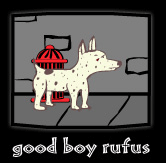Everything you never wanted to know about me.
Here are a couple of recent write-ups about me:
Read original article from boise weekly here
Pouring Heavy Metal
Artist Samuel Stimpert lets it flow
By Katy Dang
The process of turning a chunk of metal into liquid and then into a metal sculpture is truly something to behold. The metal is melted into a glowing, flowing liquid, unrecognizable as the solid form that it usually takes. It goes from a bright yellow to a raging, rosy red, taking on the colors of a coastal sunset as it sets into its new form. This is a process that has fascinated artists for centuries. The alchemy of changing lead into gold is one thing: changing liquid into an original sculpture is another thing altogether, but with similar connotations. Sculptor Samuel Stimpert relishes all aspects of the process.
In general, Stimpert is a person who makes things happen. He is well-known as one of the founders of Visual Arts Collective (VAC), which has become the hub of progressive art in Boise since opening in 2005. Stimpert runs the gallery with his wife, Anneliessa, and a core of committed volunteers. He takes an active role in the foundry at BSU, helping to facilitate pours. He also produces his own artwork: sculptures that confront their audience with uncomfortable, apocalyptic images that command attention and also show the subtle interaction of the materials that he uses.
While he puts in the effort to make these things happen, he also has the sense to let them occur naturally. In each of these projects, he puts the process in motion and controls the details to facilitate the activity, but allows the freedom to let things manifest as they will.
Stimpert was born and raised in Caldwell, Idaho. He was brought up surrounded by art: His father, Bob Stimpert, was an art teacher at South Junior High School for 30 years. "I've been throwing ceramics my whole life," says the younger Stimpert. He originally followed a path with a much different creative bent, earning a degree in culinary arts from Boise State. After some time in the food industry, he decided to pursue a degree in graphic design. It was during this time that Stimpert's life changed course.
"I took a sculpture class from Francis Fox, and that was it," Stimpert recalls. "I dropped all of the graphic design plans and started focusing on making sculpture." He was able to work with Fox at the metal pours at Boise State, which has a gas-fired foundry that melts bronze and aluminum. He immersed himself in the various stages of the process and experimented with both approaches to casting: the ceramic shell and the direct pour method. Along the way, he became enamored with the process of the pour. "For me, it is as much about doing it, as it is about the end product," says Stimpert. "I love the whole process, from melting down used car parts to casting them into a form of your own design."
"Sam was a student, and now he is a friend," says Fox. "The way that he works is very direct and spontaneous. He just loves working with metal."
Professor Tamsie Ringler from Mt. Hood Community College introduced Stimpert to cast-iron pouring at a summer workshop in 2003. Iron pours are very involved and take three or four days to do. They use a different type of foundry known as a cupolette, which is fired using spent coal (coke). The first iron pour was an intense undertaking for Stimpert, who worked with the molten metal pour from 5 a.m. to midnight. "I actually got heat stroke and physically ill," he says. "The theme for that pour became: 'Pour metal--puke--sleep--pour metal." Stimpert took on an independent project with Fox to build a cupolette for Boise State, and "Floyd" was completed in 2003.
Stimpert's own work includes striking imagery. His Siddhartha Gotama in Gas Mask is a life-sized vision of the Hindu Buddha. Stimpert shows the prince in traditional robes, sitting cross-legged, with a gas mask on his face. It is the second in a series called "Icons" that Stimpert has been working on for over six years. The first was Madonna and Child Enthroned in Gas Mask. "That particular image came out of a dream that I had just after 9/11," says Stimpert. "I dreamt that the Virgin Mary came to me wearing a gas mask. She was worried that her baby was going to be born deformed. "I think the religious icons wearing gas masks make the comment that even the gods aren't safe from our destruction," says Stimpert. The Siddhartha Gotama in Gas Mask sculpture is currently in the B.O.D.Y Show at Studio on 4th Gallery in Reno, Nevada.
The image of the gas mask is used in many of Stimpert's sculptures. "To me, they are a symbol of triumph and defeat at the same time," he explains. "They provide clean air and allow you to breathe in toxic environments. They indicate a cause and an effect at the same time.
"It's all a part of the hypocrisy of the human experience," he continues. "I think we're all hypocrites in a way. I fancy myself an environmentalist, but I drive a big truck. People wear silver jewelry and use items made from clay, and those materials come from strip mining, from raping the earth. We all live that way, constantly; every living thing is that way. And maybe that's what we're supposed to do. I mean, I want to recycle, and I want to do good, yet I still have to live." Stimpert often lets his work take on a form of its own.
"One of the things I find most interesting about Sam's work is his process," says artist Sue Latta. "He is very loose, and allows the materials to do what they do without trying to control the outcome. He revels in the unpredictability.
"I think his work is a lot like his personality," says Latta. "You know that his hand has been in it, but he hasn't clasped so tightly that you still see his fingerprints. It's more like he starts the process and then just lets the natural outcomes happen."
Stimpert has found that running VAC keeps him inspired to keep creating new artwork. "We've been really busy, so I haven't had much time, but at the same time, being at the gallery has piqued my interest in doing more and more work," he says. "Now, the results just come in spurts instead of being a constant."
One of the eventual goals of VAC is to provide a campus for artists to be able to come together to create their work. "When you get out of school, you lose that community of people working in different mediums in the same area, who help each other out and push each other along," says Stimpert. He also envisions creating a traveling foundry that can be taken to schools, particularly in rural areas where farmers often cast their own tools. "I think that could be a cool way to get kids interested in art, and also bring their fathers into the process. I'd like to show that metal and cast work can be accessible. You don't have to pay big bucks and send it to a foundry. I want people to know that they can do it themselves."
Rest assured that Sam Stimpert will keep up his work with VAC and keep taking his art further. "His work is very detailed, very interesting, and a little bit controversial," says his father, Bob Stimpert. "He pushes the limits, but that's what artists are supposed to do."
---------------------------------------------------------------------------------
Read the original article on the Reno News and Review Website
Body parts B.O.D.Y. Reno News and Review By Chad Sorg We know that B.O.D.Y. is an art exhibition. By the title, we can figure out the theme. But ask what the acronym stands for, and you'd better be ready to hear a variety of lewd, rude, crude and purely nonsensical responses, none of them serious--"Butts, Orgasm, Dick, Yo-Yo," for instance. Candace Nicol, artist and B.O.D.Y.'s organizer, could offer only this to clarify: "It's open for interpretation." Nicol, 40ish, with an abundance of giggles and a warm, chipper demeanor, teaches art at Truckee Meadows Community College. She's married, has a daughter, and creates mixed media art incorporating photos of the male nude. In recent exhibitions in which she's been featured, the artist's recurrent theme has become obvious: She wants us to see more naked men. With B.O.D.Y., Nicol invited sculptors, painters, performance artists and printmakers who she knows to exhibit here in Reno with her. Five of the artists are from Boise, Idaho, where Nicol studied art. One is from Maryland, and one is from Lake Tahoe. Three, including Nicol, are Renoites. Nicol's two photography and resin works feature the only naked men on view, though a frighteningly giant testicle-like wax and latex ball hangs from a frighteningly sharp steel hook gracing the center of the exhibit space. Across the room from this piece is a work made of 35 clear resin blocks hung from hooks with what looks like bloody smears and violent red gouges on 31 of them. Sue Latta made both of these pieces, and she explains that the inspiration came from seeing "suspension," where people pierce their skin with hooks and hang their bodies from the ceiling while the skin's stretching accommodates the weight. The big hung ball renders this practice quite realistically. Latta says the resin blocks on the wall are a "calendar reference," and the piece is called "Only Women Bleed." Titled after an Alice Cooper song, the artwork clearly refers to menstruation, but more pointedly, it deals with "cutters," or those who make slices on their arms, legs and other bodily locations with a razor in an unhealthy effort to cope with stress. The artist indulges that her daughter is/was a cutter. Also gripping the audience's attention is a life-size cast-iron Buddha draped in saffron fabric and a cast-iron gas mask. The Buddha, created by Samuel Stimpert, is a reference to our current state of the world, in which countries such as India have taken over the iron industry. The United States, with fairly strict environmental protection laws, can no longer compete with other countries that host lax pollution laws. Iron production is dangerously pollutant. For this reason, there is only one iron foundry left in this country. Conceptually tight, the India/Iron theme carries over in the form of a wall-mounted manhole cover halo with an Indian mandala design. Poison, pollution and war are points Stimpert explores with two other works included in the show that present gas masks, in the words of the artist, "as a symbol of triumph and defeat." B.O.D.Y. isn't an erotic display of the human form or a macabre exhibition of flesh. The varied meanings and analogies in the art point to our ongoing fascination with the human vessel. It is a high-minded display that deals with our curiosity. But damn it, would somebody please explain what B.O.D.Y. really stands for?



